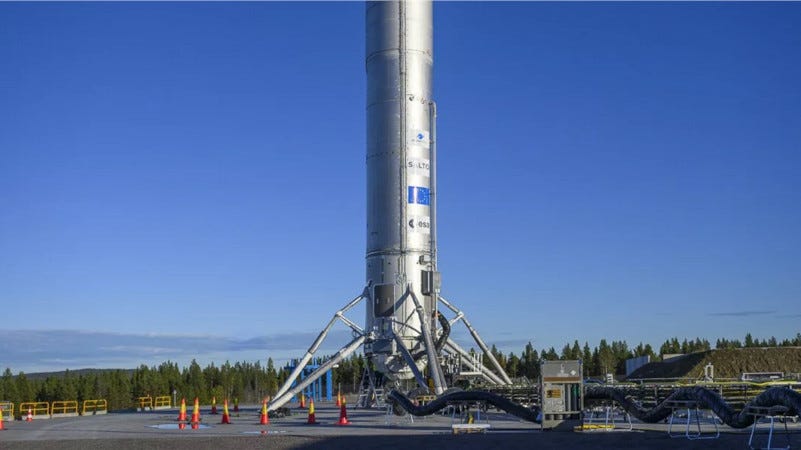Europe's Themis Reusable Rocket Prototype Installed on its Launch Pad
'Combined Tests' on the Ground will Lead to First Flight
Since its arrival at Sweden's Esrange Space Center in June, ArianeGroup teams have completed the integration of the Themis prototype. It was then transferred to the Launch Zone and erected on its launch pad.
This milestone marks the beginning of the 'combined tests', during which the interface between Themis and the launch pad's mechanical, electrical an…




